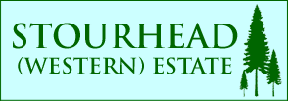

 Home
Products
Timber Info
Activities
Lettings
About
Contact
Home
Products
Timber Info
Activities
Lettings
About
Contact

Cladding Installation
General
Cladding should be installed onto battens to provide a drained and ventilated space behind it to allow any moisture that has penetrated the gaps to disperse. If using vertical cladding with no gaps behind (e.g. tongue & groove it is necessary to use vertical counter battens behind the horizontal battens. It is normal to stop cladding 400mm or so above the ground, to prevent staining from rain splash.
Nailing is the easiest method of fixing, both for softwoods and green oak. Stainless steel nails are essential for oak and cedar, but recommended for all cladding.
Recommended Nail Positions
 board-on-board
board-on-board
 lapped
lapped
 overlapped boards
overlapped boards
 Secret Nailing
Secret Nailing
For all cladding we recommend stainless steel nails. TradeFix Have a good range. The best nails to use are ring shank, flat head nails. Ring shank hold best. Nails with smaller heads can pull through softer woods such as cedar. However using a nail gun can save a lot of time, and problems caused by the smaller heads are rare. For most profiles a single nail in the centre of the board will suffice. For wider boards you may prefer to use two nails at the quarter points on the face.
For overlapped boards, it is best to nail just above the preceding board. Nailing in the middle where the board is unsupported can split the board. Nailing through both boards causes a fight as the board dries and shrinks, and can split the board, particularly at the ends.
Nailing through the tongues of T&G to achieve hidden nails is a recipe for splitting. However it is possible to secret nail an offset T&G profile securely.

"Heart side out"
As timber dries, it shrinks by different amounts around and across the grain. This causes boards to "cup", curving away from the centre of the tree. If a cladding board is nailed with the heart side against the battens, as it dries the edges will curl away from the battens. If nailed with the heart side out, the centre of the board cannot move and the edges push tight against the battens, and the board stays flat.
Any non-symmetrical profiles should be machined so that the heart side is out, so you do not have to think about it. For sawn boards or symmetrical profiles, look at the curved growth rings on the end of the board. Turn the board so that the rings form a smile, and the top surface needs to face out.